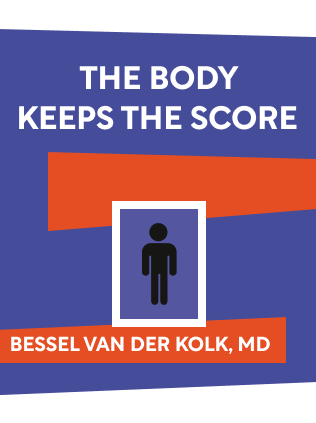

This article is an excerpt from the Shortform book guide to "The Body Keeps The Score" by Bessel van der Kolk. Shortform has the world's best summaries and analyses of books you should be reading.
Like this article? Sign up for a free trial here .
What is psychomotor therapy? Is it an effective PTSD treatment?
Psychomotor therapy is a practice in which you physically recreate the scenes of your memories and then rewrite the events. It is often used as a treatment for PTSD.
Read more about how psychomotor therapy works to help with PTSD.
Using Psychomotor Therapy
Another form of therapy, called PBSP psychomotor therapy, allows you to physically recreate scenes of your childhood and trauma, and then essentially rewrite the story. Creating a physical representation of traumatic memories activates the right hemisphere of the brain — the same hemisphere where trauma is also largely imprinted.
This psychomotor therapy typically happens in a group, with one person — called the protagonist — at the center. As the protagonist talks about her experiences, the therapist periodically makes witness statements, which are observations of how the protagonist’s body language changes as she brings up certain details (e.g. slumping over as she talks about how her father left her family).
When the protagonist begins to feel overwhelmed, the therapist can ask if she’d like to choose a contact person to sit next to her; if so, she gets to choose who in the group is her contact person and where exactly they’ll sit. The presence of the contact person is meant to offer a sense of safety and comfort as the protagonist continues to delve into her painful memories.
As the protagonist continues telling her memories, members of the group are chosen to stand in as key characters from the story, such as parents and siblings, allowing the protagonist an opportunity to say something to her father that she couldn’t say as a child, for instance. Furthermore, the protagonist instructs these actors where exactly to stand and which direction to face; this activates the right hemisphere’s spatial abilities, and can offer insight about the protagonist’s feelings toward these people (e.g. instructing an abusive father to stand far away and face out, while instructing a nurturing mother to sit nearby).
In addition, other group members also stand in as ideal versions of those characters, so the protagonist can create a loving, attentive version of her father.
Actively directing and participating in your memories in this way allows you to explore your memories and emotions in a way that’s deeper than you may be able to by simply talking about it. Creating and rewriting these scenes also empowers protagonists to experience what it would’ve been like if those events had gone differently.
This form of therapy doesn’t eliminate or neutralize traumatic memories, but it does create a new experience (e.g. of being loved or protected) that helps to rewrite your inner maps (which we discussed in an earlier section). Those inner maps are the foundation for future behavior, so altering them can change your default from being distrustful and fearful of intimacy to allowing others to get close to you and feeling safe.

———End of Preview———
Like what you just read? Read the rest of the world's best book summary and analysis of Bessel van der Kolk's "The Body Keeps The Score" at Shortform .
Here's what you'll find in our full The Body Keeps The Score summary :
- How your past trauma might change your brain and body
- What you can do to help your brain and body heal
- Why some trauma survivors can't recognize themselves in the mirror






